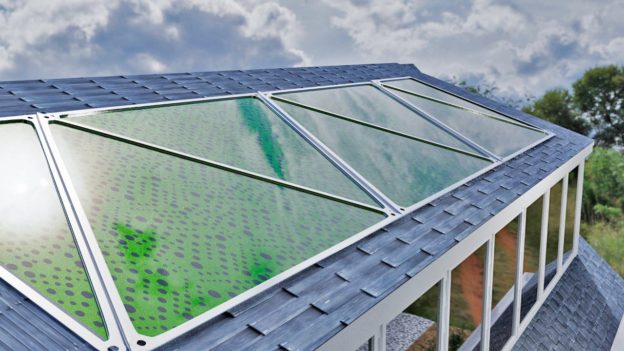
Different algae formulae can not only generate power through biomass technology, but also absorb carbon dioxide, and a Mexican startup has managed to develop an algae Biopanel by combining the two advantages of algae.
Mexican startup Greenfluidics’ algae Biopanel places algae in between transparent panels, making it look like fluorescent green solar panels, and can be placed at sources of carbon dioxide, where the algae would capture carbon dioxide and produce oxygen through photosynthesis. The better the sunlight conditions would yield a better growth condition of algae.
This is not a pristine energy concept. Splitterwerk Architects and engineering company Arup had collaborated on a full-scale demonstration building BIQ back in 2013 that was configured with 200 square meters of algae panels.
Photobioreactors are installed on the outside of the building to provide shades and lower the dependency on air-conditioners during summer time on the one hand, and collect thermal energy on the other hand. The photobioreactors can also filter biomass yielded by BIQ on a regular basis, and the pasty pulps can be further processed into biofuels. BIQ can sustainable fulfill 1/3 of the building’s water and heat demand.
Greenfluidics’ Biopanel has improved on heat capture and conversion. CEO Miguel Mayorga pointed out that the in-house system uses nanofluid that contains nanoparticles, and is able to improve the panel’s thermal conductivity, before being directly converted into electrical energy using thermoelectric generators and transported to the building, allowing the algae Biopanel to act like a solar panel.
With that being said, information regarding the lifespan and operating cost of the panel, power generation volume, cleaning frequency, endurance during wintertime, and conformance to environmental friendliness has yet to be revealed. Greenfluidics’ official website points out that each piece of Biopanel can generate 328 KWh/m2 of electricity each year, and is able to conserve a maximum electricity of 90 KWh/m2 due to the ability to lower the temperature.
(Cover photo source: Greenfluidics)


